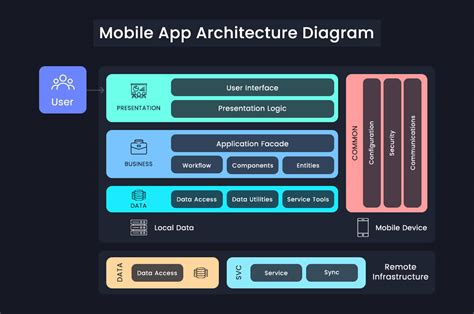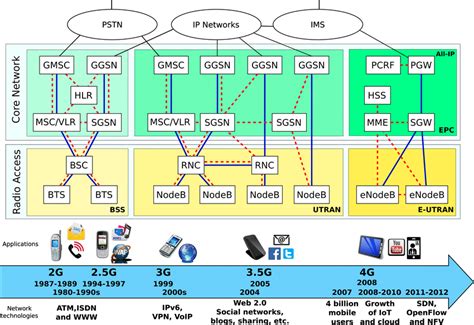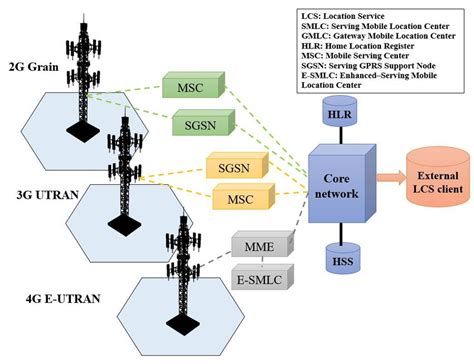5 Mobile Architecture Tips

The increasing demand for mobile applications has led to a significant shift in the way software is designed and developed. As mobile devices become more powerful and ubiquitous, the importance of well-structured mobile architecture cannot be overstated. A good mobile architecture is crucial for ensuring that applications are scalable, maintainable, and provide a seamless user experience. In this article, we will explore five essential tips for designing a robust and efficient mobile architecture.
Key Points
- Define a clear and scalable architecture pattern to support growing user bases and feature sets
- Implement a modular design to facilitate easier maintenance, updates, and feature additions
- Optimize data storage and management to ensure efficient data retrieval and synchronization
- Leverage cloud services and APIs to enhance scalability, security, and functionality
- Prioritize security and compliance to protect sensitive user data and maintain trust
Tip 1: Define a Clear and Scalable Architecture Pattern

A well-defined architecture pattern is the foundation of a successful mobile application. It provides a clear blueprint for the entire development process, ensuring that all components work together seamlessly. When selecting an architecture pattern, consider the specific needs of your application, such as the number of users, data requirements, and feature set. Popular architecture patterns for mobile applications include the Model-View-Controller (MVC), Model-View-ViewModel (MVVM), and Clean Architecture patterns. Each has its strengths and weaknesses, and the choice ultimately depends on the project’s requirements and the development team’s expertise.
For instance, the MVC pattern is widely used in mobile applications due to its simplicity and ease of implementation. However, it can become cumbersome as the application grows in complexity. In contrast, the Clean Architecture pattern provides a more modular and scalable approach, but requires more upfront planning and design.
Modular Design and Scalability
A modular design is essential for ensuring that the application is scalable and maintainable. By breaking down the application into smaller, independent modules, developers can work on individual features without affecting the entire system. This approach also facilitates easier updates, bug fixes, and feature additions, reducing the overall development time and cost. When designing a modular architecture, consider the following best practices: separate concerns, use interfaces and abstraction, and implement a service-oriented architecture.
Additionally, dependency injection can help reduce coupling between modules, making it easier to test and maintain the application. By using a modular design, developers can create a more flexible and adaptable architecture that can evolve with the changing needs of the application.
| Architecture Pattern | Characteristics |
|---|---|
| MVC | Simple, easy to implement, but can become cumbersome as the application grows |
| MVVM | Provides a clear separation of concerns, but requires more upfront planning and design |
| Clean Architecture | Modular, scalable, and maintainable, but requires a deeper understanding of the pattern |

Tip 2: Implement a Modular Design

A modular design is critical for ensuring that the application is easy to maintain, update, and extend. By breaking down the application into smaller, independent modules, developers can work on individual features without affecting the entire system. This approach also facilitates easier testing, debugging, and optimization, reducing the overall development time and cost.
When implementing a modular design, consider the following key considerations: separate concerns, use interfaces and abstraction, and implement a service-oriented architecture. Additionally, continuous integration and delivery can help ensure that the application is always up-to-date and stable.
Optimizing Data Storage and Management
Data storage and management are critical components of a mobile application’s architecture. A well-designed data storage system ensures that data is retrieved and synchronized efficiently, reducing latency and improving the overall user experience. When designing a data storage system, consider the following best practices: use a relational database, implement data caching, and optimize data queries.
Additionally, data encryption can help protect sensitive user data, while access control can ensure that only authorized users can access and modify data. By optimizing data storage and management, developers can create a more efficient and scalable application that meets the needs of a growing user base.
Tip 3: Optimize Data Storage and Management
A well-designed data storage system is essential for ensuring that data is retrieved and synchronized efficiently. When designing a data storage system, consider the following key considerations: data structure, data normalization, and data querying. A relational database can provide a structured and efficient way to store and manage data, while data caching can reduce latency and improve performance.
Additionally, data compression can help reduce storage requirements, while data backup and recovery can ensure that data is safe and recoverable in case of failures or disasters. By optimizing data storage and management, developers can create a more efficient and scalable application that meets the needs of a growing user base.
Tip 4: Leverage Cloud Services and APIs
Cloud services and APIs can provide a range of benefits for mobile applications, including scalability, security, and functionality. By leveraging cloud services, developers can create a more scalable and efficient application that can handle growing user bases and feature sets. When using cloud services, consider the following best practices: use a cloud-based backend, implement API gateways, and optimize API performance.
Additionally, cloud security can help protect sensitive user data, while cloud monitoring and analytics can provide valuable insights into application performance and user behavior. By leveraging cloud services and APIs, developers can create a more efficient and scalable application that meets the needs of a growing user base.
Tip 5: Prioritize Security and Compliance

Security and compliance are critical components of a mobile application’s architecture. A well-designed security system ensures that sensitive user data is protected, while compliance with regulatory requirements ensures that the application meets the necessary standards. When designing a security system, consider the following key considerations: data encryption, access control, and authentication.
Additionally, security testing and validation can help ensure that the application is secure and compliant, while incident response and management can help respond to security incidents and minimize their impact. By prioritizing security and compliance, developers can create a more trustworthy and reliable application that meets the needs of a growing user base.
What is the most important consideration when designing a mobile architecture?
+The most important consideration when designing a mobile architecture is scalability. A scalable architecture ensures that the application can handle growing user bases and feature sets, while also providing a seamless user experience.
How can I optimize data storage and management in my mobile application?
+To optimize data storage and management, consider using a relational database, implementing data caching, and optimizing data queries. Additionally, data encryption and access control can help protect sensitive user data.
What are the benefits of leveraging cloud services and APIs in my mobile application?
+The benefits of leveraging cloud services and APIs include scalability, security, and functionality. Cloud services can provide a range of benefits, including reduced latency, improved performance, and enhanced security.
How can I prioritize security and compliance in my mobile application?
+To prioritize security and compliance, consider implementing data encryption, access control, and authentication. Additionally, security testing and validation can help ensure that the application is secure and compliant.
What are the key considerations when designing a modular architecture for my mobile application?
+The key considerations when designing a modular architecture include separate concerns, use of interfaces and abstraction, and implementation of a service-oriented architecture. Additionally, continuous integration and delivery can help ensure that the application is always up-to-date and stable.
Meta description suggestion: “Discover the 5 essential tips for designing a robust and efficient mobile architecture, including defining a clear and scalable architecture pattern, implementing a modular design, optimizing data storage and management, leveraging cloud services and APIs, and prioritizing security and compliance.” (149 characters)



